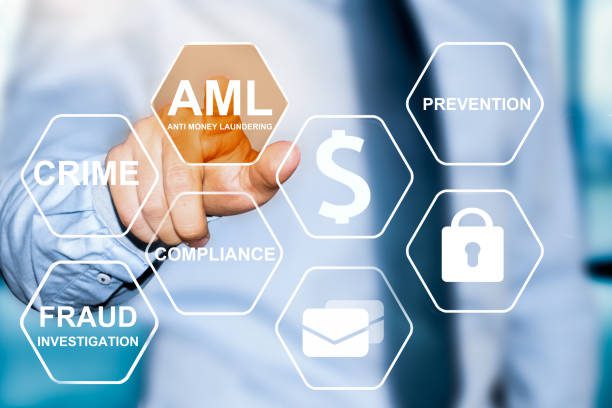Companies across industries face distinct problems as regulatory obligations, corporate standards, and best practices evolve at a breakneck pace. It is not enough to comply with present regulations in highly regulated industries like financial services—companies must predict and plan for forthcoming regulations that will affect all elements of business operations and systems.
Anti-Money Laundering (AML) compliance has unquestionably been one of the top priorities for authorities overseeing financial institutions around the world. The legislative measures aimed to combat current money laundering and terrorist funding schemes have changed and become more sophisticated as AML has evolved and become more sophisticated throughout the decades. The Bank Secrecy Act of 1970 gave financial institutions advice and a framework for implementing sufficient controls to monitor financial transactions and report suspected fiscal behavior to the appropriate authorities. The framework for how financial institutions combat money laundering and financial terrorism was established by this statute.
Money Laundering?
Money laundering is defined as the act of a money launderer legalizing money gained through criminal means. Money launderers utilize a variety of strategies to legalize dark money, including bitcoin investments. Businesses are increasingly concerned about money laundering. The IMF estimates that 2-5 percent of global GDP is laundered each year.
Why is AML required?
AML aids financial institutions in combating money laundering by preventing criminals from concealing the source of monies linked to unlawful activities through transactions. Terrorist financing, which uses similar ways to source and hides funds, is similarly addressed by AML laws.
AML Regulations
AML Compliance is the process of identifying and screening money launderers in order to limit money laundering attempts and comply with AML requirements. Global watch lists, sanctions, and politically exposed person’s lists are used to screen customers. For financial organizations such as banks, FinTech, stock exchanges, real estate, cryptocurrencies, and others, AML screening is required to verify their consumers or enterprises. Businesses can prevent financial crimes including money laundering and terrorism financing by adhering to AML standards, as well as avoiding non-compliance fines and a tarnished brand name.
Why is AML so challenging?
AML operations today show little resemblance to those of a decade ago. Even with tougher transaction monitoring systems and robust Know Your Customer KYC solutions, the change to digital banking has resulted in an ever-increasing scope of money laundering, with financial institutions (FIs) processing billions of transactions every day. In this blog, we share our experiences working with financial institutions to build enterprise-scale anti-money laundering (AML) solutions on the lake house platform that provides strong oversight while also delivering innovative, scalable solutions that adapt to the reality of modern online money laundering threats.
How to Survive AML Compliance Obstacles?
Money laundering is exceedingly complicated in any form and challenges every day as a result of its global presence and wide range of goods, markets, business lines, and delivery routes. Additional AML compliance issues have arisen as a result of significant technological improvements, which have provided criminals with sophisticated tools to launder money, as well as increased regulatory pressure to satisfy additional compliance standards.
To overcome these obstacles, financial institutions must shift their focus in order to capitalize on the potential of a more connected, complicated, and difficult environment. FIs should explore how existing monitoring processes may be altered to accommodate these new intelligence-led techniques now that innovative tools like entity resolution, network analytics, and dynamic segmentation are available. This will be better positioned to lead more real-time risk analysis, efficient investigations, and successful AML detection by using OCR technology and solving data problems. Finally, this will contribute to the larger goal of preventing the financial system from being used to fund illegal activity.
What is AML software and how does it help with compliance?
General risk assessment is one of the numerous components of AML compliance that software can help to streamline. This is when the corporation examines clients and inquires about the level of risk they hold. How likely is it that the client will attract money launderers if the client is a company? What is its location, and who is connected to it? Obviously, this type of profiling is time-consuming, but the correct software may help speed up the process by consolidating the data that business leaders need to make these judgments. Using industry standards, the software can examine clients’ details and assign it a risk score, which can then be used to analyze the account’s rights and determine whether it should be investigated further.
Conclusion
Financial crimes and terrorism financing are combated by AML procedures at financial institutions and banks. AML standards are constantly changing around the world, and financial institutions are responsible for keeping up with and updating their AML processes. Banks can enhance global safety and economic security by preventing criminals from concealing the origins and locations of their illegal transactions.

